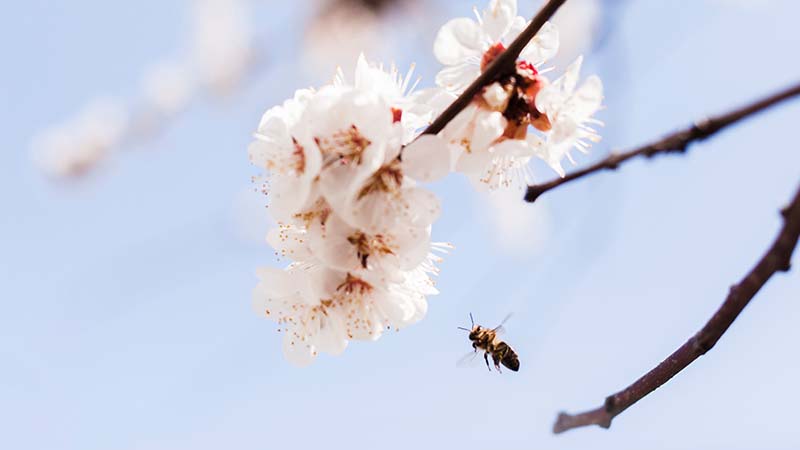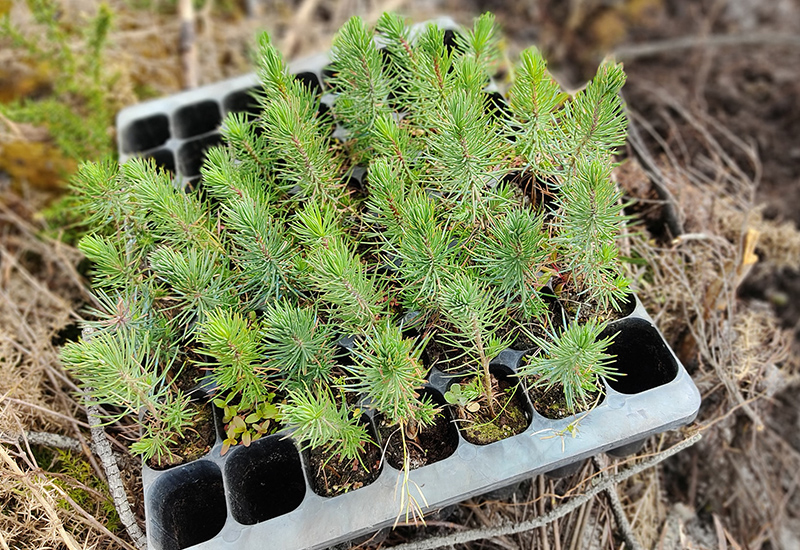By Tamsin Varley
February is a fantastic time of year in the Algarve as plants burst into life, cheering us all up with their fresh leaves and beautiful flowers. One of the most stunning trees now is the almond which is smothered in enormous white or pinkish flowers creating a memorable sight.
Portuguese legend has it that a dark-skinned Moorish prince married a beautiful blonde princess from a Nordic land and they were very much in love. However, although she adored the sun-kissed lands of southern Europe, she missed the snow and ice of her homeland. One day the handsome prince found his love in tears and she finally admitted that she was pining for the snow-covered fields from the land of her birth. So, the prince ordered his men to plant almond trees as far as the eye could see so that when they flowered, they gave the illusion of snow. When spring came, the Princess could not believe her eyes and shed tears of joy; and so they lived happily ever after. How romantic is that? A perfect story for St Valentine’s Day.


The almond tree is native to Iran but has been spread by man to north Africa and southern Europe. They are one of the earliest fruit trees to be domesticated and evidence points to them being cultivated in the Bronze Age, up to three thousand years ago. Almond fruits were even found in Tutankhamen’s tomb, which dates from around 1325 BC. It is a small deciduous tree that grows between five and ten metres tall. Almonds grow best in a Mediterranean climate with hot dry summers and mild wet winters. They start bearing fruit three years after planting and the fruits mature seven to eight months after flowering. The trees rely on insects for pollination and, astoundingly, in the United States – which produces 55% of the world’s bees – some 1.4 million hives (about half of all hives in the USA) are transported to California every spring just to pollinate the almond trees.
If you have ever picked up and eaten dropped almond fruits from the ground you may have noticed that some nuts are incredibly bitter and unpleasant to eat. Thankfully, our natural instinct is to spit them out, which is a good thing as the bitterness is caused by cyanide. Eating just fifty nuts is lethal for adults, but only five to ten could be fatal for children. I’ve learned from bitter experience which trees in my garden yield the sweet nuts and I leave the inedible nuts to the rats.
Almonds are used widely in cooking. They can be eaten raw or toasted but are also used in a wide variety of desserts and cakes. Marzipan is a popular sweet made from ground almonds and fruit-shaped sweets are widely available from bakeries here in the Algarve. Almonds can also be processed to produce almond milk which is a great choice for lactose intolerant people and vegans. Almond flour (or meal) can also be used as a substitute for wheat flour in cooking and baking. Almonds are also a rich source of oil which is used in cosmetics, aromatherapy and in perfume. They are also a good source of protein and regular consumption can reduce the risk of heart disease by lowering blood cholesterol levels.
Tamsin Varley is a member of Clube Dos Bons Jardins, a small, friendly multi-national garden club that meets at a different location around the Algarve on the 2nd Tuesday every month except over the summer with an optional lunch afterwards.
algarvecbj@gmail.com














